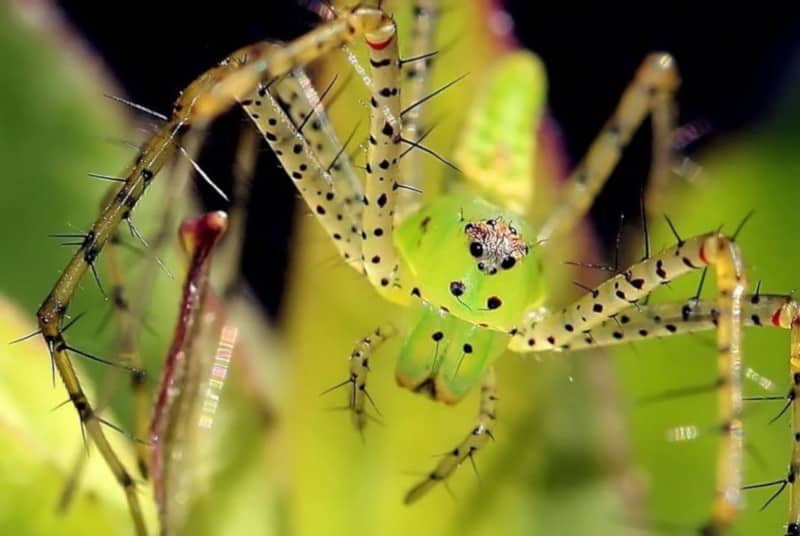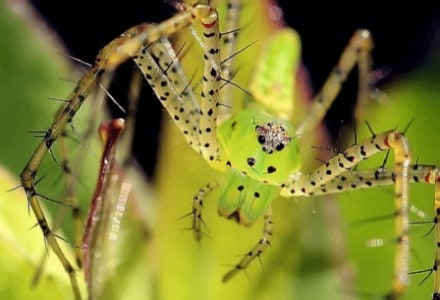
Green Lynx Spider Facts
- Most notably, the Green Lynx Spider is a fascinating species for several reasons. That’s because it displays two traits rare among spiders. Also, one of those must make other spiders green with envy.
- Firstly, the female actually has the ability to change its normal coloring. Why only the female can remain a mystery, however. But, the alteration occurs slowly and can take several days to complete.
- Secondly, the remarkable species also has the extremely rare ability to spit its venom. This makes the fascinating invertebrate one of only two known arachnid species with this ability.
- It rarely bites humans, and its venom is not lethal. But, the bite can be quite painful, and significant swelling of the immediate area often occurs. Finally, the spitting of venom appears to only occur as a result of the individual feeling threatened.
Related Articles
Mouse Spider Diving Bell Spider Hobo Spider
Green Lynx Spider Physical Description
The Green Lynx Spider displays a rather moderate degree of sexual dimorphism. That occurs quite commonly among spiders. However, its approach to this also differs from that of most other spiders.
The body of the female may be as much as 0.9 in (23 mm) long. But, that of the male reaches less than 0.5 in (12 mm) in length. Further, his body grows more slender in shape, but his leg span is greater than the females.
In addition, the legs of both sexes are quite powerful. This species can, therefore, jump relatively great distances. The lynx portion of its common name occurs due to this remarkable leaping ability.
Finally, the overall coloring typically, as the name suggests, presents a bright light green. Numerous small black spots also dot the body. Within its typical habitat this provides nearly perfect camouflage.
- Kingdom: Animalia
- Phylum: Arthropoda
- Class: Arachnidae
- Order: Araneae
- Family: Oxyopidae
- Genus: Peucetia
- Species: P. viridans
Public Domain Image
Green Lynx Spider Distribution, Habitat, and Ecology
First of all, this incredible species possesses a wide distribution. The species primarily occurs in the southern United States. However, it also appears in smaller numbers in northern California, Mexico, Central America and the West Indies.
But within that range, it does have specific habitat preferences. Therefore, it prefers woody shrubbery, small bushes, and other large plants. Furthermore, the species typically prefers warmer, dry habitats.
Individuals also love to inhabit various agricultural fields. Here, the species serves a vital role as controllers of insect pests. Yet it does not construct webs to catch its prey. This species typically hunts as an ambush predator.
However, some individuals also sometimes actively pursue prey. This, therefore, represents yet another uncommon trait. Finally, the mesmerizing species possesses an average lifespan of only one year.
Species Sharing Its Range
Cobra Lily Mexican Mole Lizard Florida Panther
Check out our other articles on 5 Spellbinding Scorpions, Caribbean Reef Octopus, Tiger Leaping Gorge, Sacramento Prickly Poppy, Giant Leopard Moth, American Crocodile

